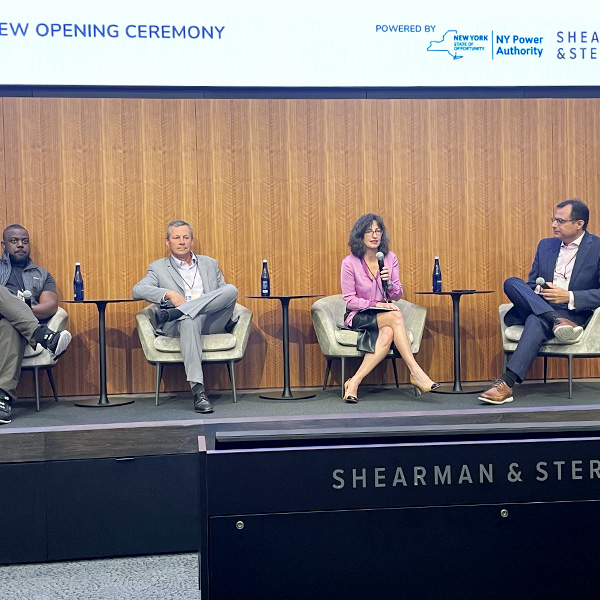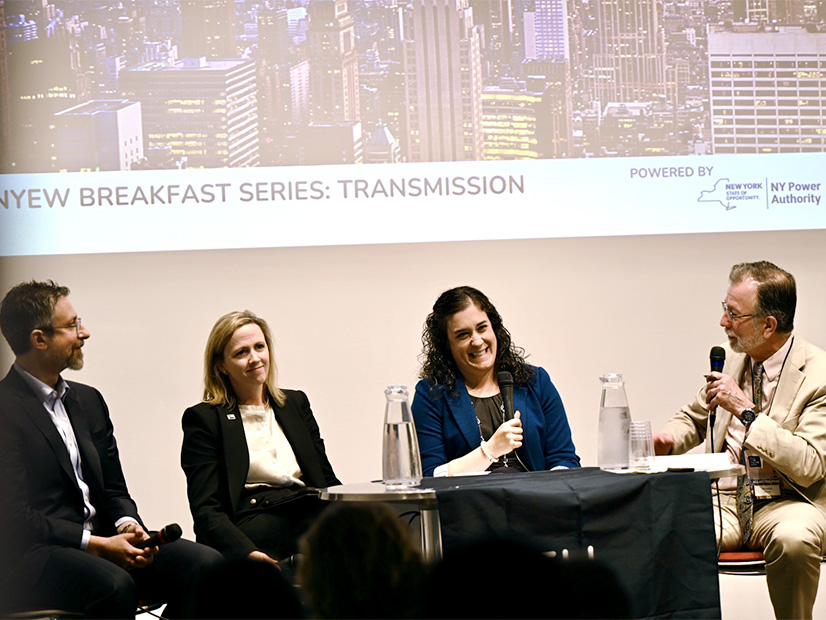
NEW YORK — After a three-year hiatus prompted by the coronavirus pandemic, New York Energy Week returned to Manhattan last week, with participants celebrating the progress the state and city have made toward decarbonization while offering sobering acknowledgements of the challenges ahead.
Co-sponsored by Consolidated Edison, the New York State Energy Research and Development Authority and technology provider EnerKnol, the program offered panel discussions and presentations at several venues around New York City.
During a panel discussion on opening night June 20, Matthew Ketschke, vice president of distributed resource integration for Con Ed, observed that the utility, which serves 3.6 million customers in New York City and Westchester County, is at “the hub of the energy transition in New York City and New York state.”
“One of my roles is to help to figure out how to make that happen, [with] stakeholders and both government and industry innovation,” he said.
Ketschke noted that Con Ed, “the oldest continuously traded company on the New York Stock Exchange,” recently celebrated its 200th anniversary. “The original company was a manufactured gas company. It actually used whale oil to produce manufactured gas,” he said. “It wasn’t until the 1950s that we started to flow natural gas.”
Ketschke acknowledged the difficulty of meeting the state’s Climate Leadership and Community Protection Act, which requires 70% renewable energy by 2030 and 100% by 2040.
“Clearly, New York has set up very ambitious goals. But without ambitious objectives and goals, you really don’t make a whole lot of progress. We’re going to have some significant technical hurdles to overcome. But New York is already way ahead in a lot of areas,” he said, citing the city’s 100-year-old electrified subway system and its “very low” per capita energy consumption.
The utility recently published a long-range plan for decarbonizing its gas system, which considers “shrinking and sunsetting” the system or repurposing it for low-carbon fuels, such as hydrogen.
“I think there are a lot of challenges,” he acknowledged. “That said, we’re New Yorkers. We’re pretty good at overcoming challenges, and I think there’s a lot of very good work that’s been done so far.”
Hiring Needs
To meet those challenges, Con Ed is expanding its outreach efforts as it looks to add 1,000 new employees in the next year.
“That means going to high schools and having conversations with kids who might never have thought of the electric business or the gas business or the energy business as being a career for them,” Ketschke said. “Somebody I’m real interested in coming to work for us is somebody who is in high school … and is an athlete and … likes a physical job, but never thought of being a lineman, or maybe a gas mechanic, or working in a power plant.”
The company offers a tuition aid program that helps employees go to college. “We have a number of people today working [as] general managers and vice presidents who came in as meter readers and kind of worked their way up,” he added.
Con Ed and others seeking workers should expand their hiring criteria to emphasize “helpfulness and grit,” said Donnel Baird, CEO of New York-based BlocPower, which helps decarbonize homes and other buildings in low- and moderate-income neighborhoods. “When it really comes down to finding the best talent … if you’re serious about it, you’ll end up with a DEI [diversity, equity and inclusion] strategy.”
For its part, BlocPower is providing job training to gang members and the incarcerated.
“There is, as we all know, a massive undersupply of skilled labor and skilled technicians across the country that is so pervasive that it could cripple all of the incredible clean energy legislation the Biden administration has passed,” he said. “We may not be able to implement [the Inflation Reduction Act] if we don’t solve this green workforce problem.
“There is a lot of heavy lifting that must be done, and my premise is that … most of us, if not 98% of us — even folks who are climate advocates — we do not truly believe that we’re going to pull this off,” he continued. “So we are all struggling with depression. We’re struggling with anxiety, particularly if you have children or … grandchildren that you care about. People don’t really believe that we’re going to pull this off. And so our job at BlocPower is to identify the geographies and markets where there’s an appetite to go big or go home.”
BlocPower has contracts to help three cities — Ithaca, N.Y., and Menlo Park and San Jose, Calif. — that have committed to decarbonizing 100% of their buildings.
“And so over the next five or six years, we’re supposed to invest around $6 billion of private sector capital … to help building owners finance affordable electrification for all in these cities, and go building by building to install air source heat pumps, heat pump hot water systems, replace gas ovens, and develop the workforce to go building by building to do that.”
Victoria Cerullo, acting executive director for the New York City Mayor’s Office of Climate and Environmental Justice, spoke about the city’s efforts to aid its 500,000 “energy-cost burdened” families and identifying “underutilized rooftops” to bring solar to small apartment buildings in environmental justice communities.
“We have old buildings here in New York City — old buildings [and] new buildings. … We need to harness all of the existing rooftops and any accessible space to power the city.”
Transmission, Generation to Eliminate the ‘Tale of Two Grids’
The push for more solar in New York City is among the efforts policymakers are making to eliminate what has been termed the “tale of two grids” in New York state, with upstate residents getting 90% of their electricity from non-emitting generation, and city residents depending on fossil fuel generation for 90% of their power needs.
Another effort to eliminate that disparity is Clean Path NY, an $11 billion partnership between the New York Power Authority (NYPA), energyRe and Invenergy to deliver more than 7.5 million MWh of emissions-free energy into New York City annually.
“We are extraordinarily proud of the fact that our project, and all of the projects that are happening, are really now oriented toward delivering meaningful benefits to frontline communities, to avoid some of the negative social health consequences that are pursuant to the burning of fossil fuels,” Clean Path COO Luke Falk said. “The reduction of [nitrogen oxides, sulfur oxides and particulate matter] attributable to just our project will reduce the statewide emissions from electricity by more than 20% per year.”
Falk, who discussed the project in a panel discussion Wednesday, was joined by Patricia Lombardi, senior vice president for NYPA, who discussed plans to retire additional fossil fuel peaker plants in the city as the new renewables are connected.
Several plants were recently shuttered, and NYISO will be issuing a short-term reliability assessment in July on plans to retire additional peakers in 2025, said ISO Executive Vice President Emilie Nelson, the third member of the panel.
“The reliability margins are narrowing,” Nelson said. “And that really comes back to what we’ve already talked about: that new supply needs to come into service in order to allow for resources to exit.”
Improving air quality in the city means winning buy-in from upstate communities hosting the generation and transmission. Clean Path sought to minimize the impact by using existing rights of way and putting much of the remaining transmission underground, Falk said.
“Our experience is that it is extraordinarily important … to give primacy to community engagement and stakeholder relations,” Falk said. “And that’s not just a talking point for our project. We’ve had literally hundreds of meetings with different groups across the state, representing every type of interests that you can think of: from the most local community-centric concern to … broad, regional environmental concerns, to labor, to workforce development to … our elected officials, and everybody in between. It’s an ongoing process.”



